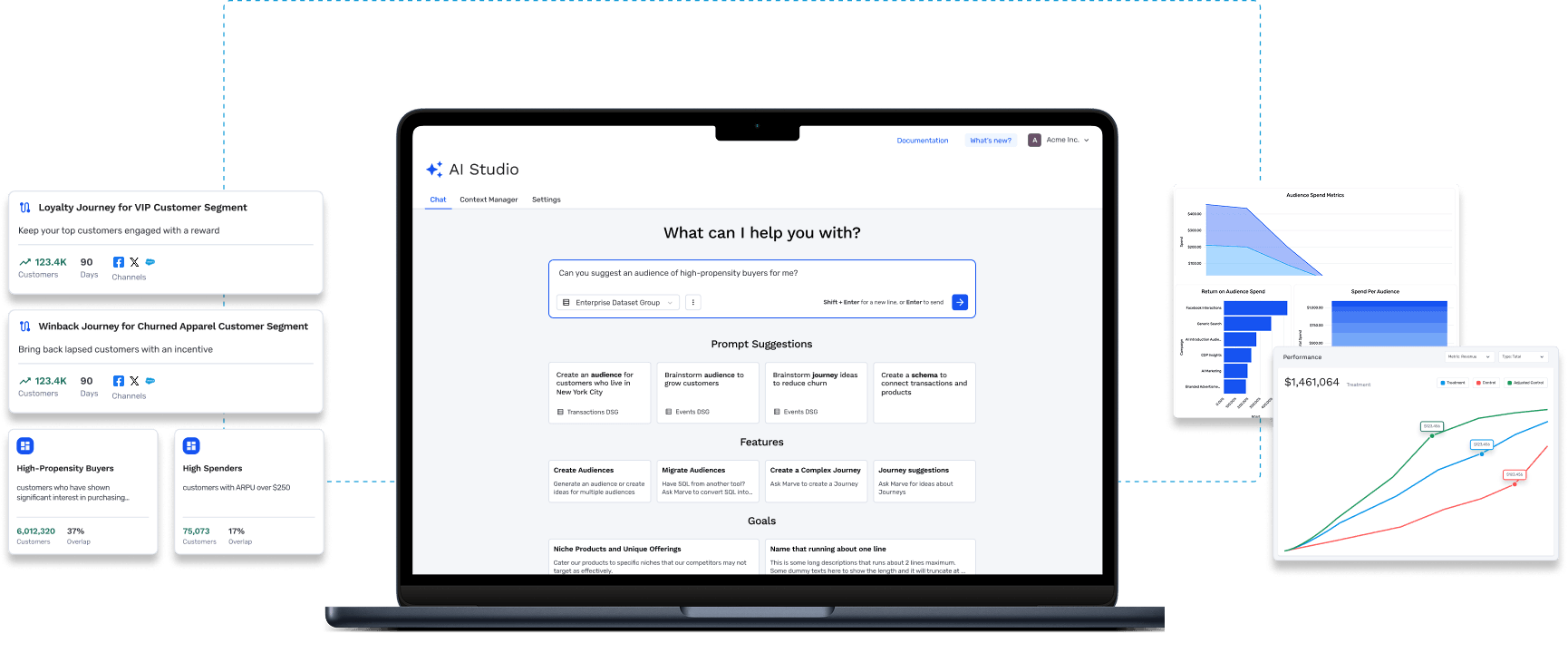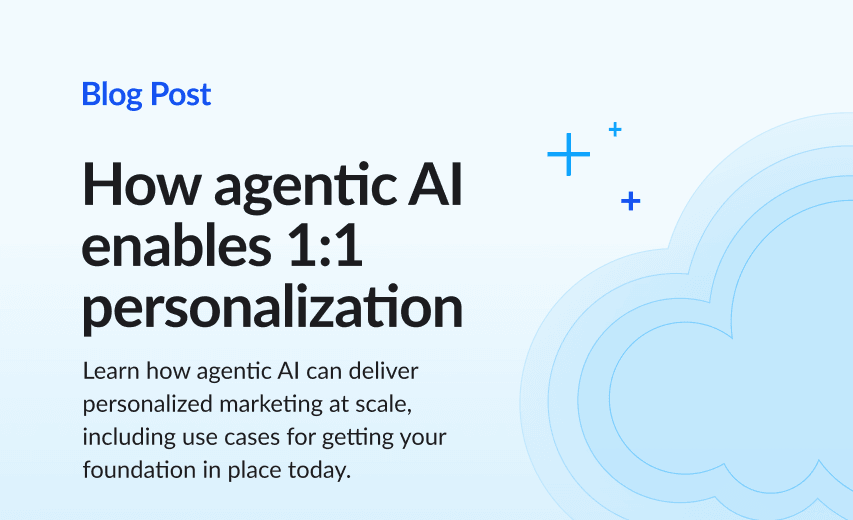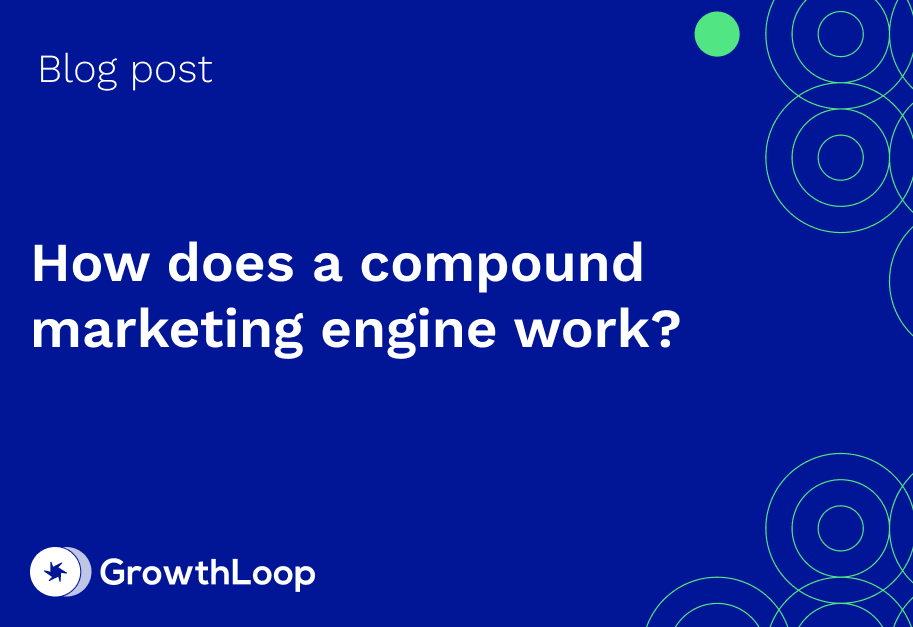How does a compound marketing engine compare with alternatives?
A compound marketing engine replaces a CDP (customer data platform) or the CDP component of a marketing suite.
Here are the differences between a compound marketing engine and a CDP or marketing suite:
Traditional CDPs + marketing suites
Compound Marketing Engine
Data access and scope
Limited to the data explicitly copied from the cloud, resulting in incomplete datasets and restricted workflows that require engineering resources.
Directly connects to data clouds like BigQuery, Snowflake, Databricks, and Amazon Redshift, providing access to all data without duplication.
AI agents
Relies on static AI models that lack flexibility and adaptability to specific business needs.
AI agents work from the enterprise data cloud and real-time performance data. The agents suggest audiences, journeys, and next best actions for upcoming campaigns.
Audience building
Relies on siloed, outdated data that doesn't reflect real-time customer behavior, leading to misaligned segments and ineffective targeting. Data teams often have to pull audiences for marketers.
Marketers leverage real-time audience building powered by cloud-native data and assisted by an agent that pinpoints hyper-relevant segments for every campaign.
Journey orchestration
Limited to the channels the platform supports, not the channels that fit your strategy. Requires engineering support for new channels.
Marketers build omnichannel journeys with agents based on historical data, customer preferences, and your campaign objectives.
Reporting and insights
Marketing teams rely on data team support to pull metrics or must go to each individual system or channel to analyze insights.
Agents ingest real-time performance data, analyzes trends, and uncovers revenue-driving opportunities to fuel continuous improvement. The agent then delivers actionable campaign suggestions for marketing teams to review and approve.
Compound growth
Limited reporting and siloed workflows slow iteration and campaign improvement over time.
When your data cloud uses agentic AI to connect audiences, journeys, and campaign results, real-time iteration, and compounding improvement, become a reality.
How to be future-proof with a Compound Marketing Engine
The marketing industry is moving towards AI at every stage of the marketing cycle, driving efficiency and growth.
As marketers evaluate technology, it’s important to ensure that today’s decisions can reach this future. A truly AI-powered marketing cycle requires three key features:
Agentic AI must operate on the data cloud – providing secure, comprehensive and real-time access to first-party data, for maximum effectiveness.
Agentic AI must operate across all platforms and channels – providing holistic orchestration of audiences, journeys, and campaigns.
Agentic AI must operate across the whole marketing cycle – allowing it to collect results and optimize further.
AI solutions that only make decisions for parts of the marketing cycle will not reach the ultimate destination: a marketing cycle powered by AI throughout, with the benefits of rapidly compounding growth.








